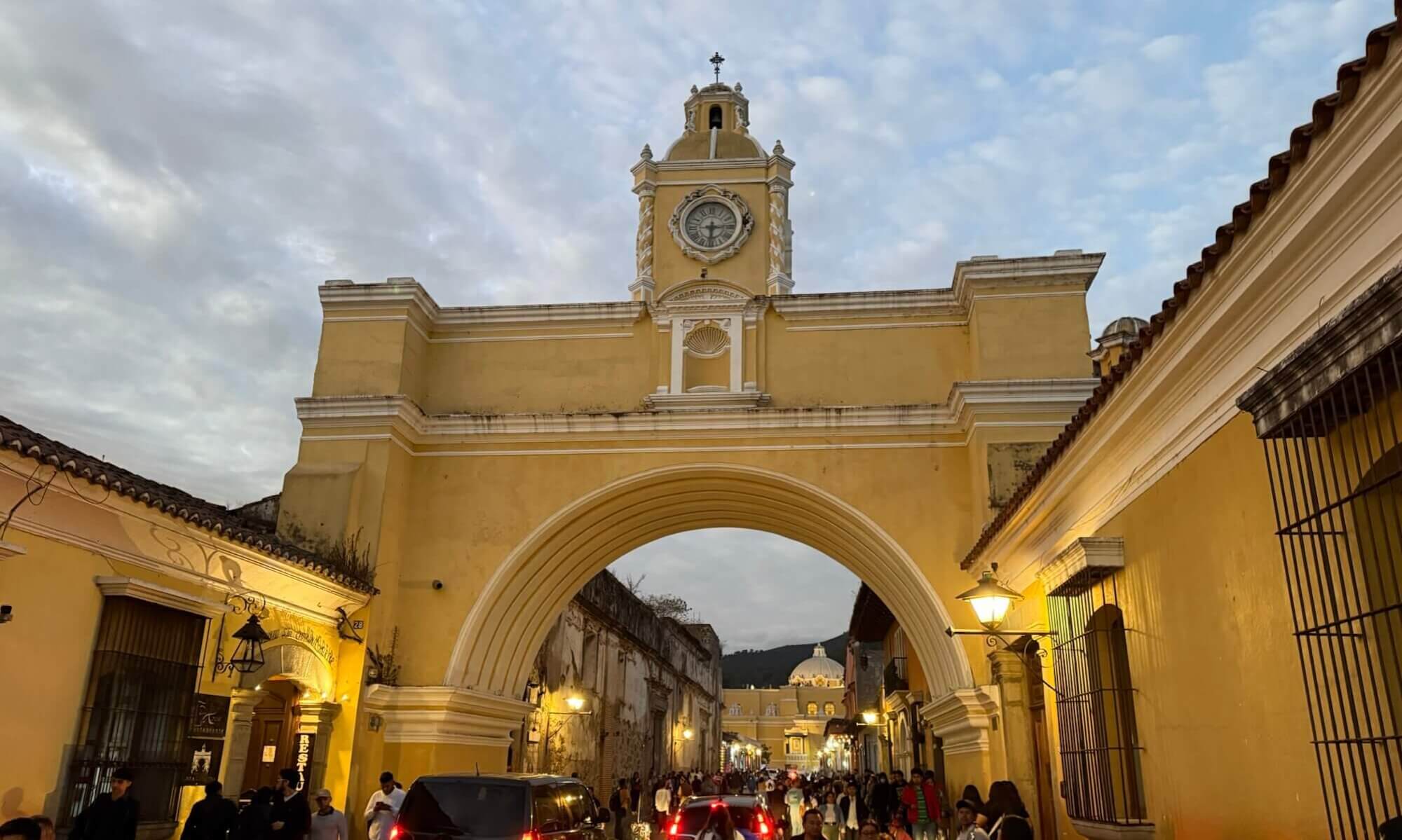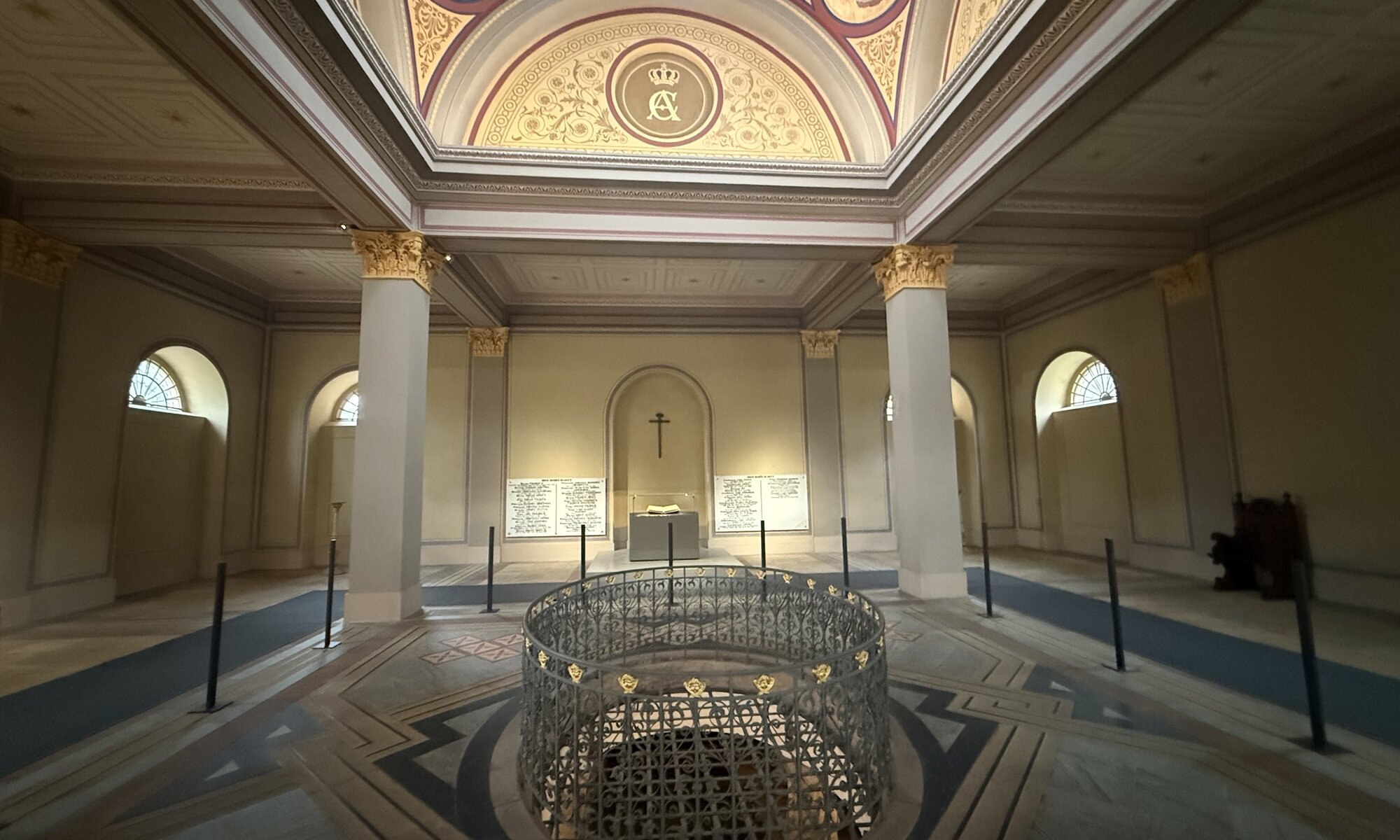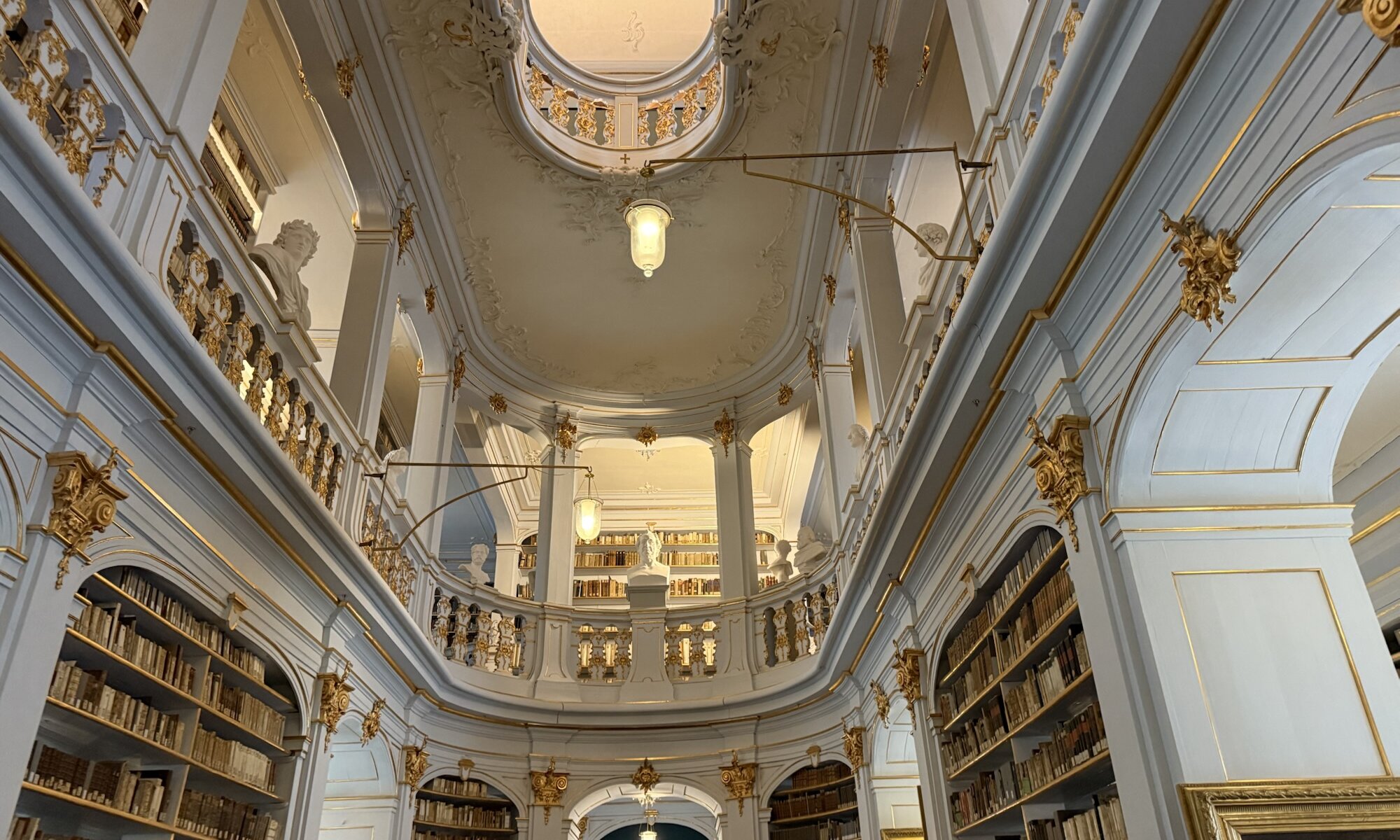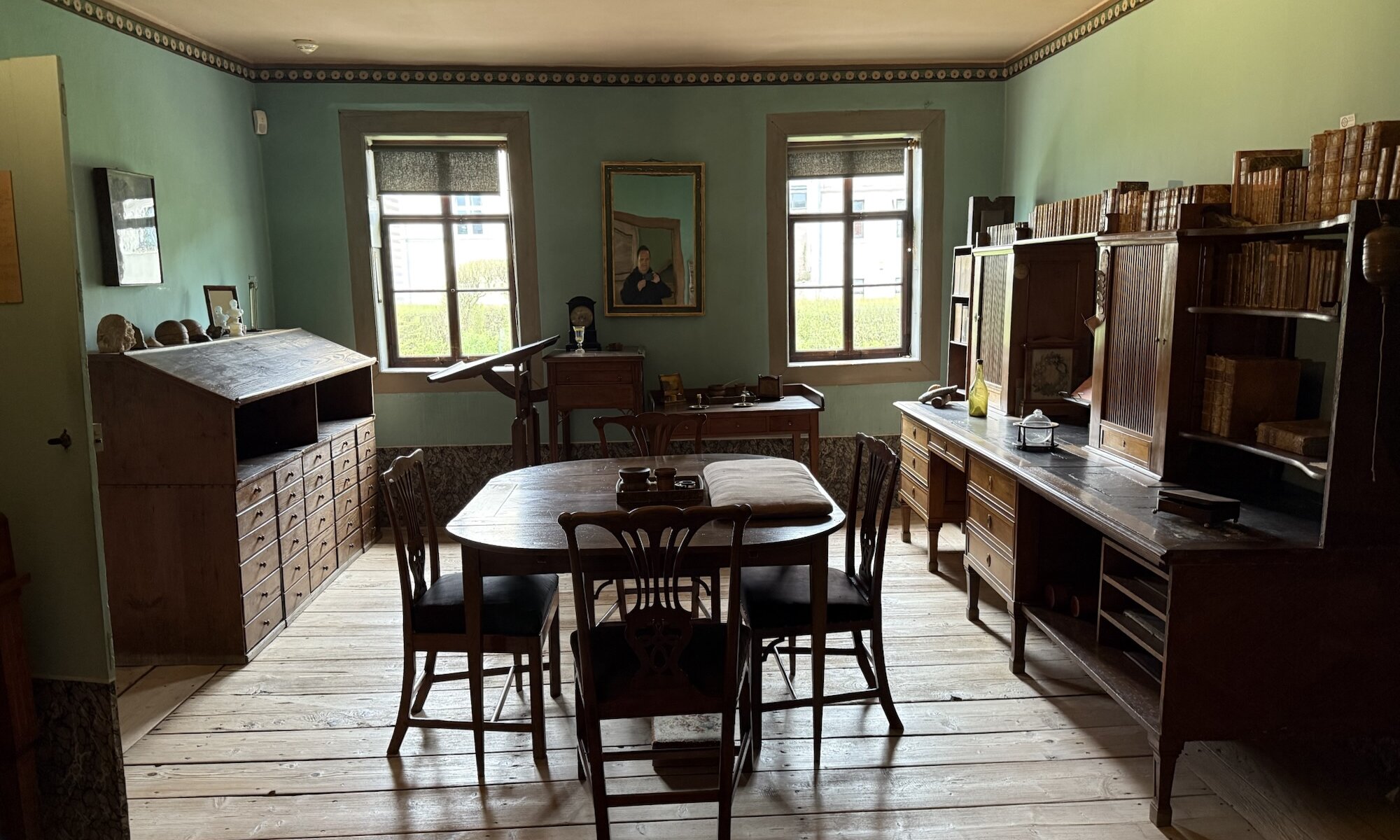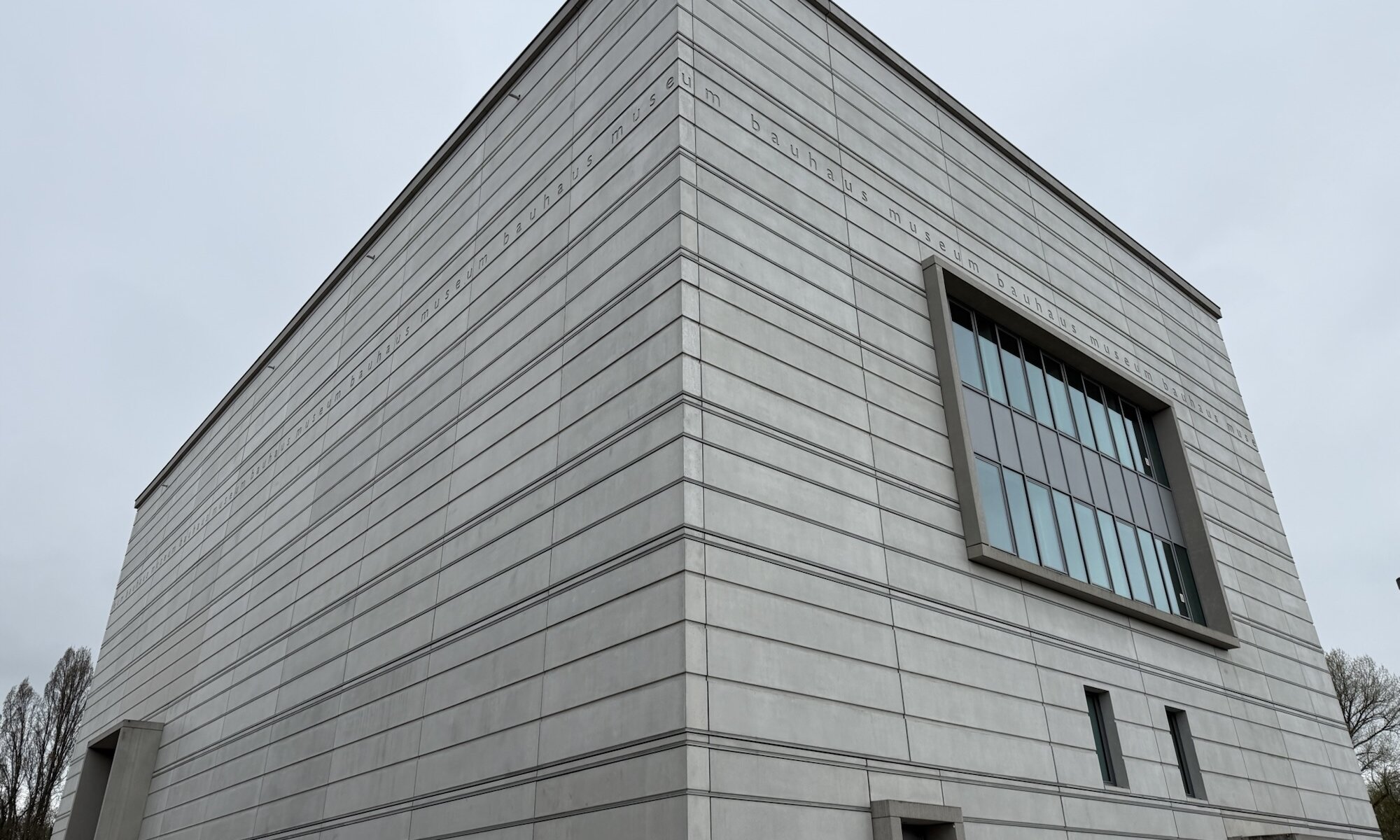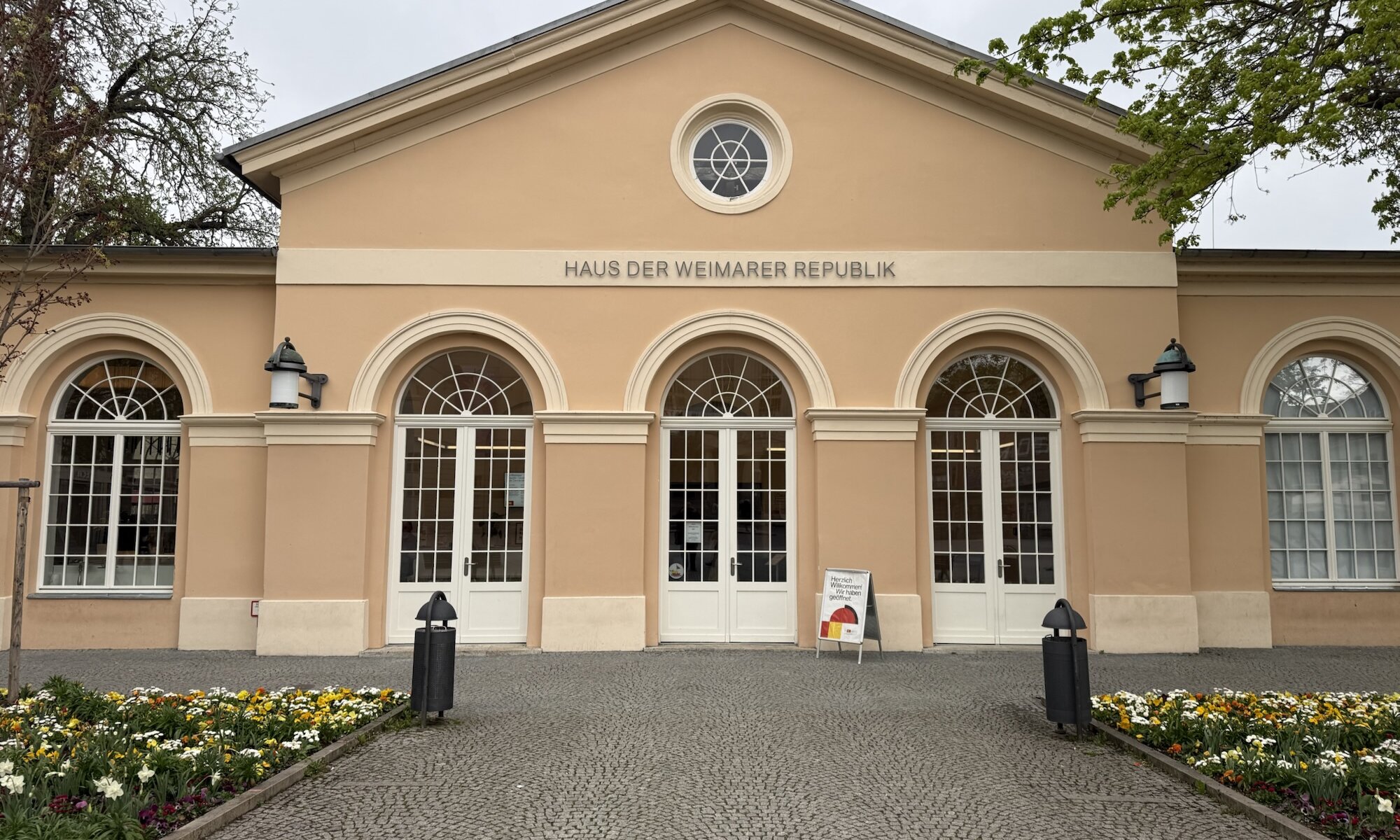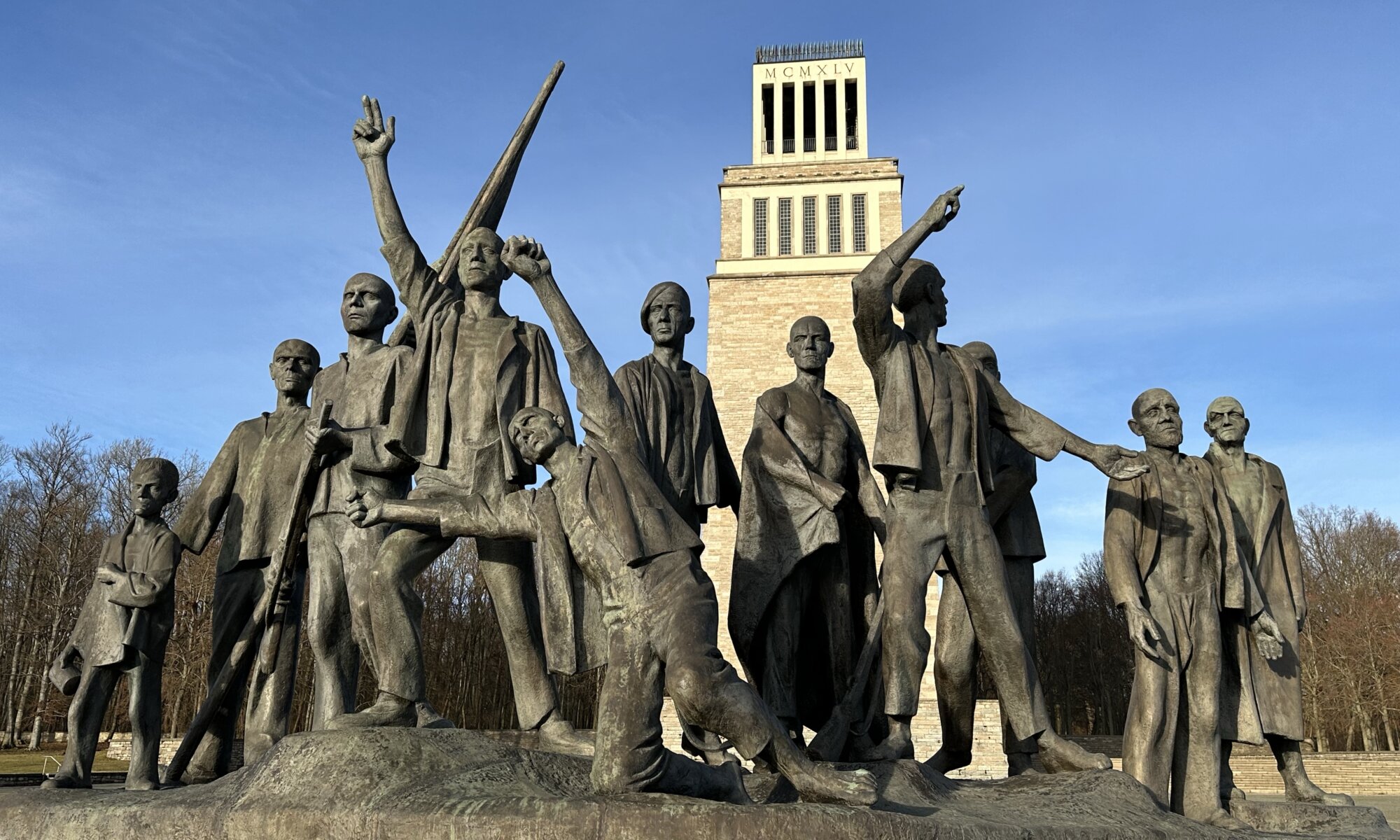The Fürstengruft in Weimar is a neoclassical mausoleum located on the historic cemetery of the city, built between 1823 and 1828 as the burial place for the ducal family of Sachsen-Weimar-Eisenach. The structure features a doric columned entrance, a chapel with a star-adorned dome, and an underground crypt. Its sober architecture was intended to reflect dignity and simplicity, with an oval opening in the floor through which coffins could be lowered into the vault below.
Continue reading “Fürstengruft”Rokokosaal
The Herzogin-Anna-Amalia-Bibliothek in Weimar is one of Germany’s most renowned libraries, celebrated for its rich collections and its role as a center for European literary and cultural history. Established in 1691, the library houses over a million works, with holdings ranging from medieval manuscripts to modern texts. Its historic building, part of the UNESCO World Heritage ensemble ‘Classical Weimar‘, stands as a testament to centuries of cultural preservation and intellectual life.
Continue reading “Rokokosaal”Goethe-Nationalmuseum
The Goethe-Nationalmuseum in Weimar is the most significant museum dedicated to the life and achievements of Johann Wolfgang von Goethe. Located at Frauenplan, the museum centers around Goethe’s original baroque residence, where he lived for nearly fifty years. The house, carefully restored to reflect its state during Goethe’s final years, is complemented by a garden and two early 20th-century museum extensions that provide additional exhibition space.
Continue reading “Goethe-Nationalmuseum”Bauhaus
The Bauhaus-Museum is a striking, minimalist building located in the heart of Weimar, Germany. Its clear geometric form and spacious forecourt invite visitors to explore the roots of one of the most influential art and design movements of the 20th century. Inside, the museum houses the world’s oldest Bauhaus collection, with over 13,000 objects and documents, including iconic pieces like the Wagenfeld lamp, Marcel Breuer’s slatted chair, and Marianne Brandt’s teapot. The exhibitions are thoughtfully arranged across several floors, guiding visitors through the early years of the Bauhaus and its radical experiments in art, design, and daily life.
Continue reading “Bauhaus”Weimarer Republik
The Haus der Weimarer Republik in Weimar is a museum dedicated to the history and legacy of Germany’s first democracy, the Weimar Republic. Located directly on Theaterplatz, it stands opposite the Deutsches Nationaltheater, the very place where the national assembly met in 1919 to draft and adopt the new democratic constitution. Visitors to the museum can explore interactive exhibits, original documents, photographs, and multimedia installations that vividly illustrate the turbulent years of the Weimar Republic, from its hopeful beginnings to its tragic end.
Continue reading “Weimarer Republik”Buchenwald
German fascism created an extensive network of concentration camps, extinction camps and forced labor sites. Jewish citizens, political opponents, prisoners of war, homosexuals, disabled persons, Sinti and Romani people suffered and died because of the ideology of the German Nazi party supported by the German people. The three major concentration camps on German soil are Dachau (close to München), Sachsenhausen (close to Berlin) and Buchenwald on the Ettersberg mountain close to Weimar.
Continue reading “Buchenwald”